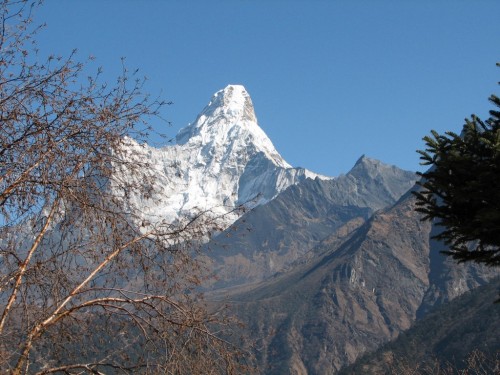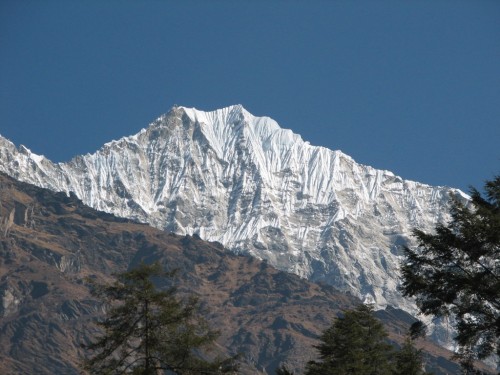What I am reading: Eyeing Everest by Steve Tolbert
Writing a novel: a writer’s journal part 26

Eyeing Everest
What I am reading: Eyeing Everest by Steve Tolbert
I must admit that a little over a week ago I had never heard of author Steve Tolbert. My supervising lecturer recommended I have a look at least one of the books written by this American born writer now living here in Tasmania, Australia. I managed to buy online an as-new copy of his novel for teenagers called Eyeing Everest. It arrived two days later.
Fifteen year old Meika lives in Hobart Tasmania, the setting of the first half of the novel. She has never met her father, and her relationship with her aunty is stronger than the one she pretends to have with her mother. Early in the story her natural mother tragically dies. The following few months as she adapts to life with her aunty are chaotic and rebellious as Meika befriends the enigmatic Ted on the streets. They both spiral deep into trouble until a letter arrives from her father who has lived in Nepal since before she was born.
Within weeks Meika finds herself swept up in the splendid beauty of the Himalayas and adapts to life with a family she never knew existed. Not only are the mountains amazing in their beauty, they are treacherous to live in. She struggles to come to terms with her new environment, new relationships, new customs and the emotions these all engender.
It was an interesting and very satisfying book to read.
My novel is also set in Nepal and so I read with interest how the author tackles his setting. In 2006 I trekked the area in which he has set his story, so that gave it extra meaning for me. He gave me some ideas that I can include during my rewriting, especially in relation to references to food. This was one area I had already identified as needing some changes. More importantly, Tolbert has inspired me to write another novel set in this enigmatic country. I must focus on my current work in progress first.
Further reading:
- Writing a novel – articles about how I went about writing a novel
References:
- Tolbert, S 1996, Eyeing Everest, Addison, Wesley, Longman, Melbourne.
- The home page of Steve Tolbert
What I am reading: photographic books about Nepal
Writing a novel: a writer’s journal part 25
What I am reading: photographic books on Nepal.
As a part of my research for background information for my children’s novel, I have been on a few visits to my local public library. Their collection of titles on Nepal is not great, but I did find several interesting titles. Two of these I mention here. Both could be categorised as coffee table style photographic essays. Both had minimal text which was more than compensated for by the brilliant photography. Most people would have found them extremely interesting just from a pictorial point of view. All of the photographs would have found a very comfortable home in publications such as National Geographic.
As an armchair traveller I enjoy the intriguing journeys of Michael Palin. He has an eye-probably two of them actually-for the bizarre, the amusing, the absurd and the downright confronting. This comes through in the various television travel series he has anchored over the years. Inside Himalaya is the spin-off book version of his television series Himalaya. The text in the book is sparse and as such was not of much help to me in my research. Despite that, I still enjoyed the sheer beauty of the photographs.
Pierre Toutain’s book Nepal is very similar. A little more than half the size of the Palin book, it matches it in the beauty of the photography. Palin’s book covers Pakistan, Tibet, Bhutan and Bangladesh in addition to Nepal, while Toutain’s book is totally focused on Nepal and as such, was more useful to me. It also has much more in the way of text (written by Michel Gotin). The text was far more informative and useful for my purposes.
My reading of these two beautiful books had one unfortunate side effect: I have a heightened desire to return someday soon the enigmatic and beautiful roof of the world, Nepal. I must get my novel finished, off to a publisher, accepted, published and then return on the proceeds from my writing. (I can dream, can’t I?)
References:
- Palin, M, Pao, B 2004, Inside Himalaya, Weidenfeld and Nicolson, London.
- Toutain, P, Gotin, M 1986, Nepal, Merehurst Press, London.
Further reading:
- My travels in Nepal – archive from my travel blog
- Writing a novel – more articles in the series about how I went about writing a novel.
What I am reading: Iqbal: a novel
My supervising lecturer let me borrow several novels to read which she thought might give me some ideas and insights about writing a novel set in a troubled country. The first of these was set in Pakistan.
Iqbal: a novel written by Francesco D’Adamo is based on the real life story of Iqbal Masih. Iqbal was sold into slavery at an early age, along with many other young children. They were put to work in appalling conditions in factories. This story follows the experiences of a hardworking group of children in a carpet factory. Iqbal inspires the other children to believe that they can be free of their slavery one day, despite the harshness and cunning of their master.
I found this book to be both inspiring and disturbing. It is disturbing because it is based on a true story. It is a fictionalized account of what actually happened. Child abuse and slavery continues today in many countries. I also found it inspiring to think that totally disempowered children can still be taught to dream – and then act upon their dreams.
While this story has no direct bearing on what I will be writing about in my thesis novel, it was still a valuable piece of background reading. My protagonist, a twelve year old boy caught in the civil war in Nepal, must dare to dream of a country where freedom and peace exist, despite the evidence of conflict all around. I need to let him dream of that place. Then I will need to engineer the plot to allow that to happen.
Reference:
D’Adamo, Francesco, 2001: Iqbal: a novel. Aladdin Paperbacks, New York.
Write what you love
“You’ve got to love libraries. You’ve got to love books. You’ve got to love poetry. You’ve got to love everything about literature. Then, you can pick the one thing you love most and write about it.” Ray Bradbury
I love libraries – all those books on all those different topics, all those wonderful adventures to be enjoyed and pictures to be enjoyed. In fact, I love libraries so much that in another life I was a librarian for about eight years. I loved buying new books for the library – especially seeing it wasn’t my money buying the books!
I love books too. I have a huge collection of books. I can’t bear to get rid of any books. Throwing out a book is akin to loosing a child. Talking of children, I love visiting my adult children, especially my daughter, so that I can become reacquainted with a part of my library. To be fair, some of her books grace my library shelves – only on a temporary basis of course – until I’ve read them.
I always loved poetry too and I’ve written my fair share of poems, from the slightly ridiculous, to the positively banal and some that are absolutely brilliant (IMHO). This year my skills at writing poetry have had a great boost while doing my Master of Arts in Creative Writing course.
But back to the quote from Bradbury.
Writers must be readers. Read widely and voraciously. Love and cherish books. Get your hands on as many as you can; read, read, read, devouring books in numbers.
Then you can pick the one genre or form or discipline you love most, and then write what you love.
Good reading and writing.

